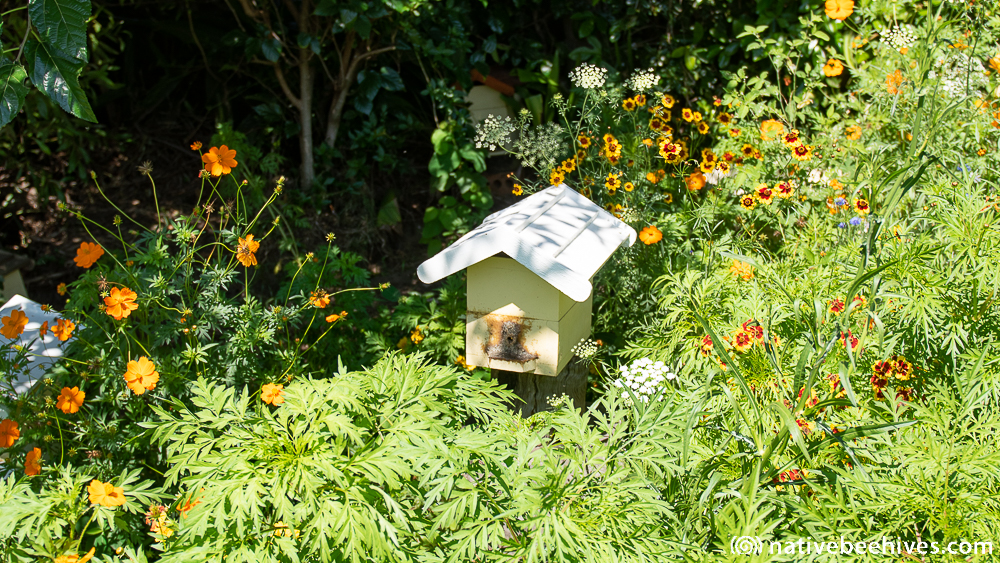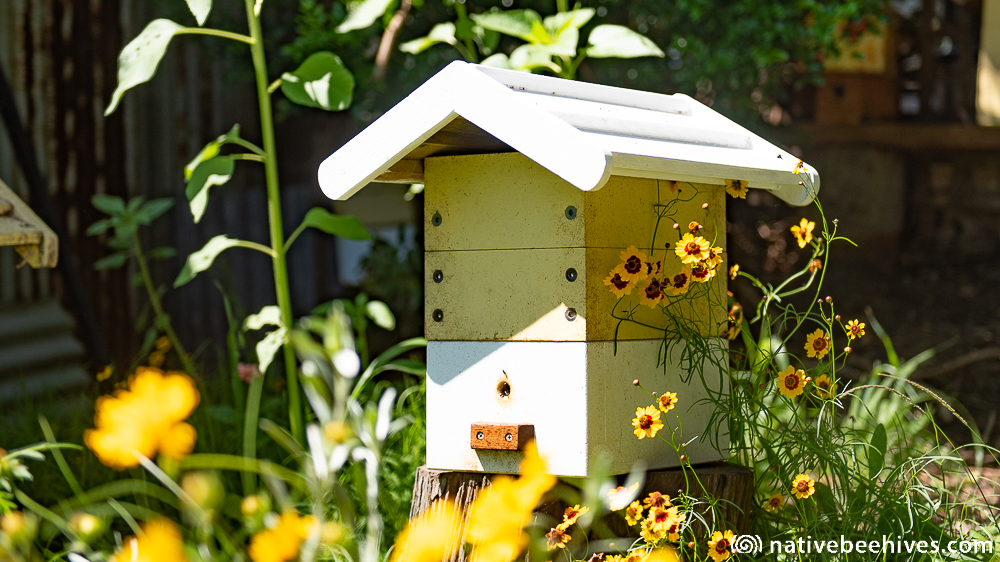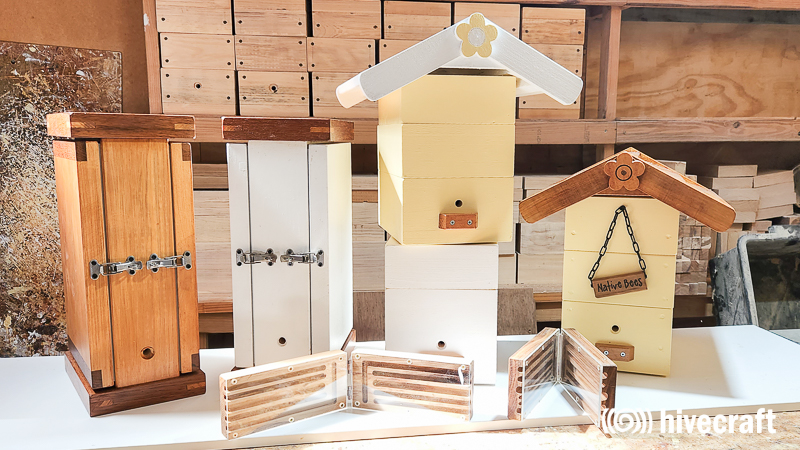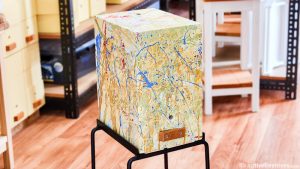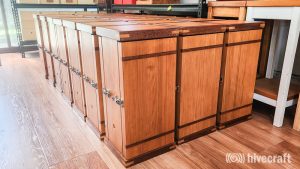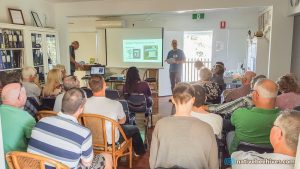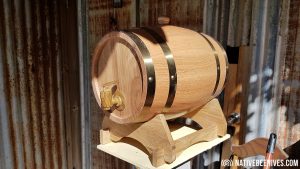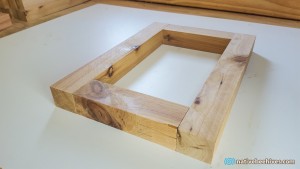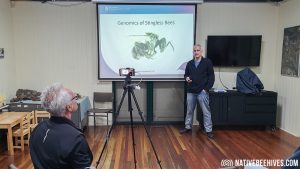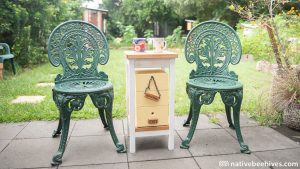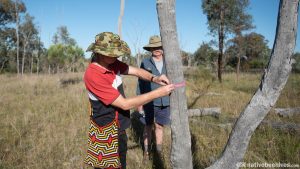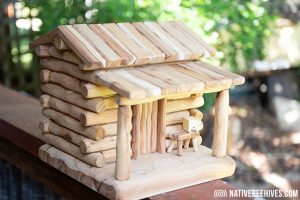Preparation
Before getting a hive it can be a good idea to find a position in your yard for where you’re going to place it.
Have a look around your yard at different times during the day. Find a position that has early morning sun to get the bees warmed up early and then has some shade during the hottest part of the day and afternoon so they don’t overheat.
Placement
The bees don’t sting so don’t worry about having them close to a living area but they do swarm sometimes and that could be awkward if they’re swarming in your patio area while you have friends over.
Make sure the hive is stable and can’t be knocked over by animals like Dogs or Possums, or Cows? If the hive is out in the yard and not sheltered, make sure it has some kind of roof to try keep the rain off. A solid timber roof like the one pictured above can also help with insulation. Keep the hive off the ground so it’s not sitting in moisture which could shorten the life of the timber. Place it on some bricks, rocks, on a stand or mount it to a post.

The Suns Heat

Under a tree can be good for shade, or under your patio so it’s sheltered from the weather and catches the morning sun coming in sideways. Sun is not always necessary and you have to be careful that the hive doesn’t get too hot or the bees could die. Your local temperatures dictate if you need sun on the hive or not. If you’re on the Qld coast and the temperatures are mild all year round then the hive may never need sun. Some morning sun in winter might be nice to get the hive warmed up. Some areas that get the extreme cold or heat will need to be more careful about hive placement.
The hive box could be placed under a tree and moved forward in to the sun in winter and moved backward in to the shade in summer.
Moving the Hive
If you need to move the hive from it’s normal position because it’s in your way, needs more sun or less sun, you can move it small amounts per day.
If you move it too far the bees that are out foraging for resources wont be able to find it on their return. Try moving it around 30 to 50cm in one day. If you notice bees gathering at the old site after you’ve just moved it, then they may be lost and you can move the hive back to collect them all. You may have to move the hive less distance each time and over a longer period.
If you need to move the hive from the front yard to the backyard and it’s not possible to move it small amounts at a time, the hive can be moved to another location 1km away for a few weeks then returned and placed in the new position.
Less lawn, more garden!
Start a garden to help supply the bees, plant a few flowering trees, a flower garden and even some vegies and let them go to flower. You can even start a Bee Garden, a small dedicated area that is packed with plants especially for bees.
You’ll attract all kinds of bees, even solitary bees,…. so on a Sunday morning you can sit there with your camera and stalk bees!
